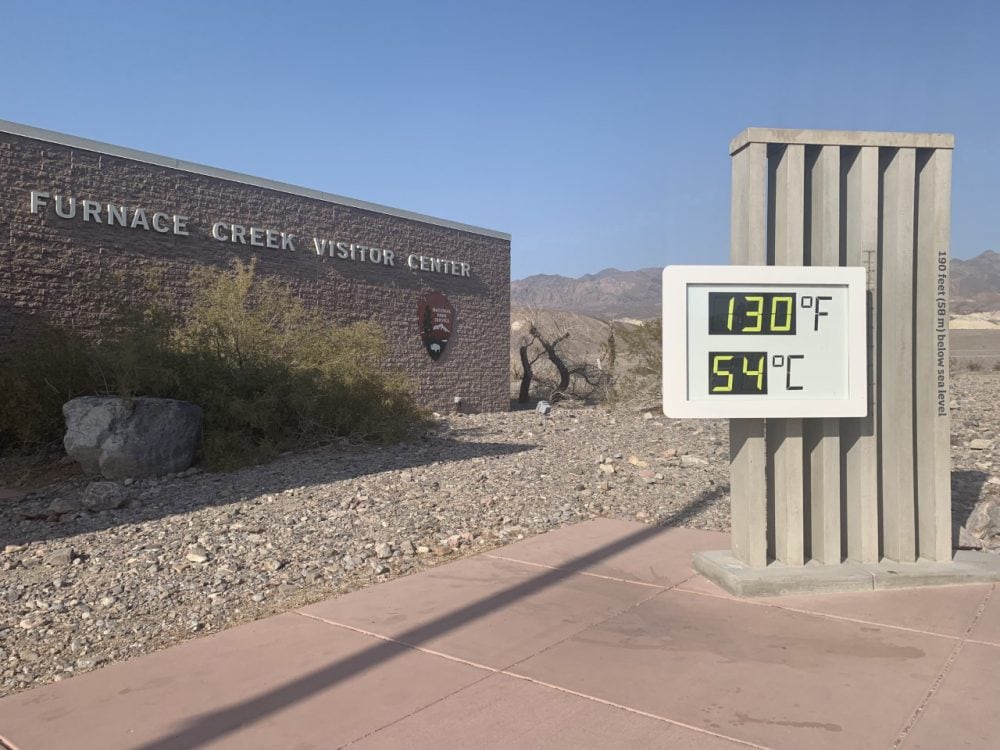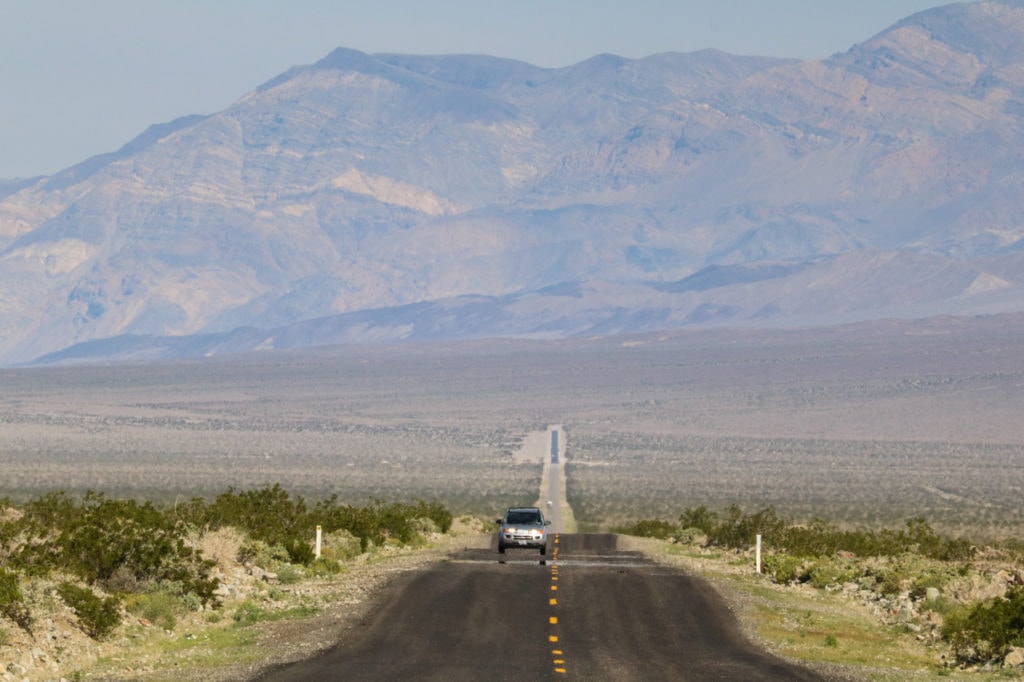2020 Summer Shatters Multiple Heat Records in Death Valley

Summer of 2020 Breaks Several Death Valley Heat Records
“Death Valley is known for its extreme temperatures, and this year certainly didn’t disappoint when it comes to heat!” Death Valley National Park Superintendent Mike Reynolds said after a summer that shattered several heat records.
In the summer of 2020, numerous heat records were broken in Death Valley National Park according to a news release from the National Park Service. This includes some days that may well be the hottest ever recorded on planet Earth.
This past meteorological summer, which runs from June through August, the average daily temperature (day and night combined) was 102.7°F (39.3°C). Only three summers have ever been hotter: 2016, 2017 and 2018, the latter being the hottest Death Valley summer on record.

Death Valley Heat Highlights in 2020
So far, there have been the following Death Valley heat highlights in 2020. Brace yourself, it’s a terrifyingly long list.
- 6 nights over 100°F (37.8°C) – normal is 0.5
- 35 days over 120°F (48.9°C) – normal is 18.4
- 8 days over 125°F (51.7°C) – normal is 2.9
- May, August and September all experienced the hottest day or night ever recorded for that month.
- Heat records were broken for both daily high and highest daily low temperatures in several of the year’s hottest months: 6 records in May, 1 in June, 1 in July, 12 (!) in August and 3 in September.
- August’s average daily and nightly temperatures make it the second hottest August on record. However, the daily high temperatures in August, averaging 118.8°F (48.2C), set a record for the hottest average high temperature in August.
- August 17 had a low of 104°F (40°C) and a high of 127°F (52.8°C), with an average of 115.5°F (46.1°C). This is a tie for the hottest average daily temperature ever recorded.
- August 16 saw a high of 130°F (54.4°C), the hottest temperature recorded in Death Valley National Park since 1913. Pending verification process by a committee of climate experts, this may be the highest temperature ever recorded on Earth.
Signs of a Changing Climate
Extreme heat is common in summer in Death Valley, which is the lowest, driest and hottest place in North America. What is unusual, however, is the sheer number of record-breaking days in the 2020 summer. This year’s summer follows several others that already broke their own set of records, too.
Combined with historic wildfires in California and elsewhere in the American West, as well as abundant other events, these extraordinary temperatures in Death Valley clearly mark a continued and undeniable record of climate change. The numbers truly say it all.
Although strongly discouraged, heat tourism is a thing in Death Valley National Park. Multiple search and rescues were necessary this year, while there were also some visitor fatalities due to the heat this year.

Please be careful and vigilant if you do decide to visit Death Valley in summer. Stay inside during the hottest part of the day, go hiking in Death Valley early in the morning.
When driving across the hot lower valleys, turn off your car’s air conditioning to prevent your engine from overheating. (There were numerous breakdowns and even two vehicle fires resulting from overheating this summer.)
If anything, it is advised to avoid Death Valley in summer. In fact, spring is a much more enjoyable and beautiful season to explore Death Valley National Park, offering comfortable hiking and camping temperatures, beautiful wildflowers and great wildlife viewing opportunities.







